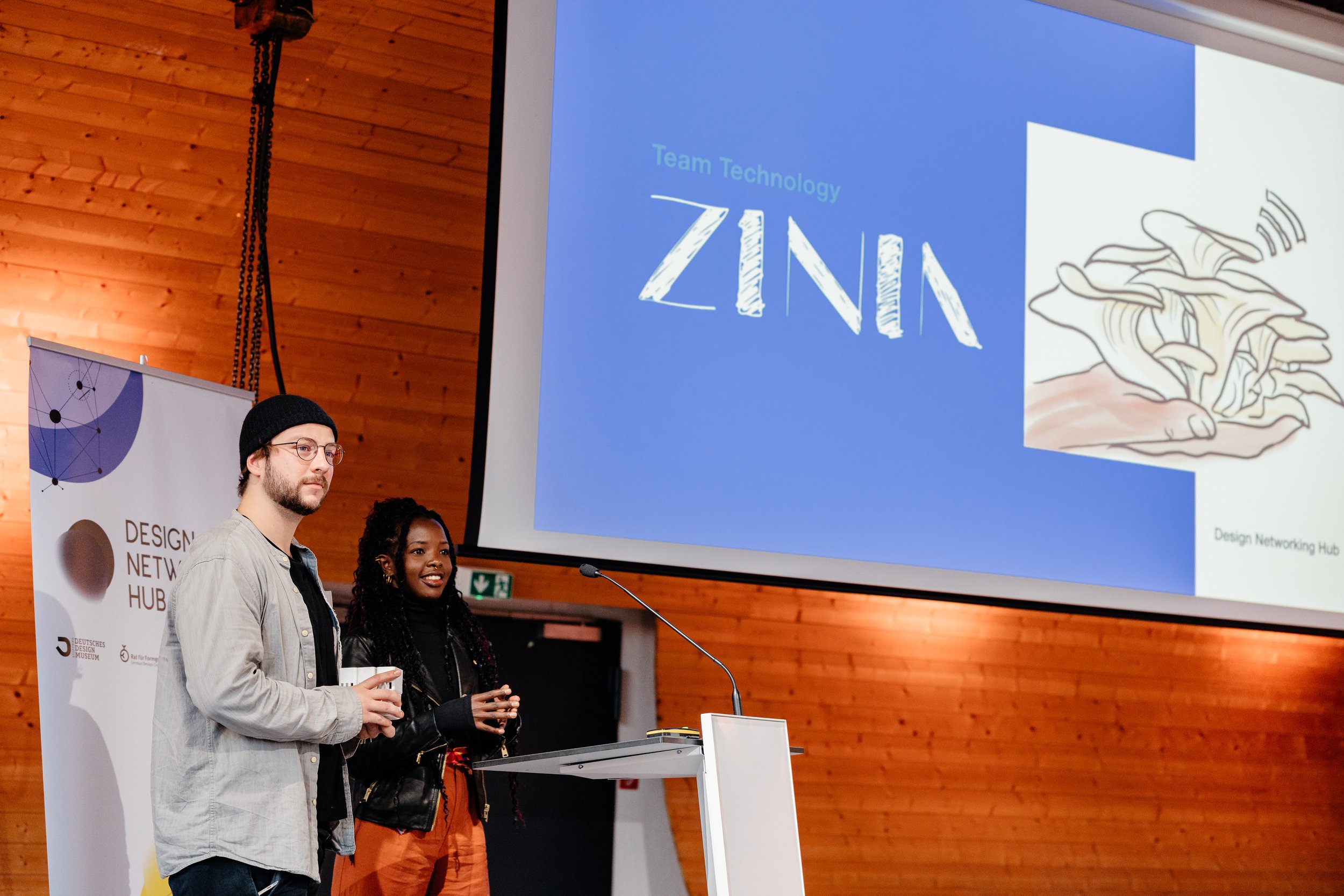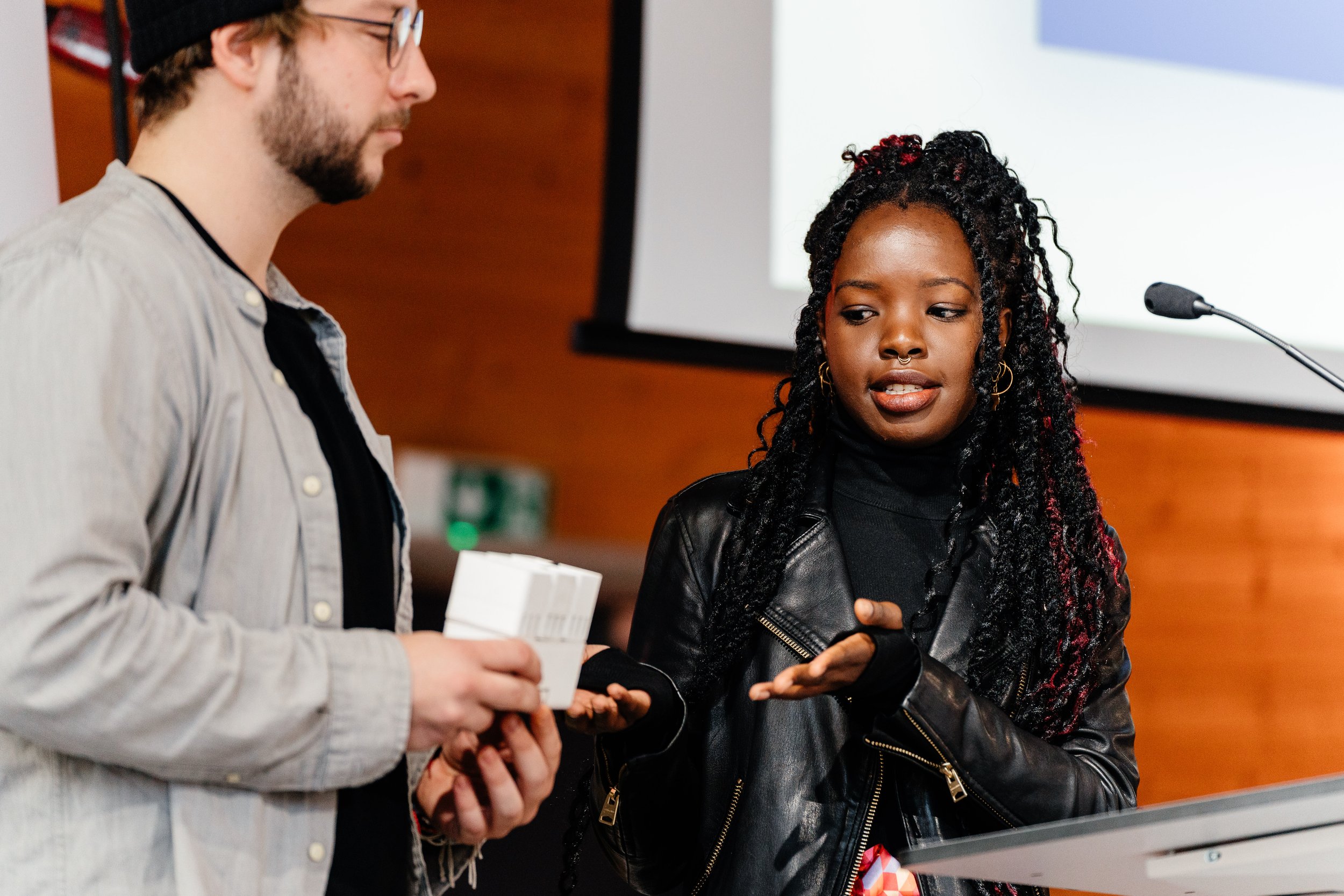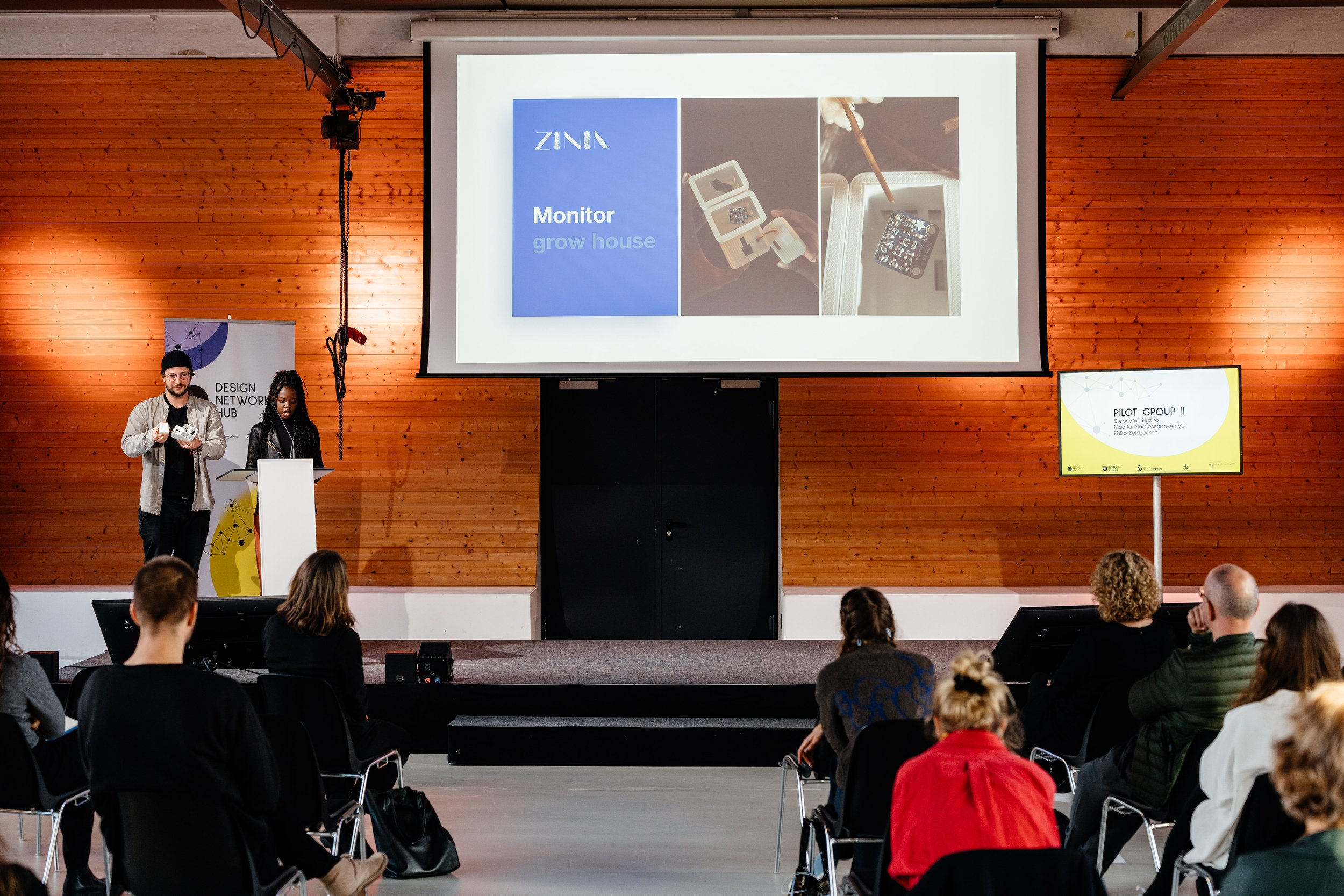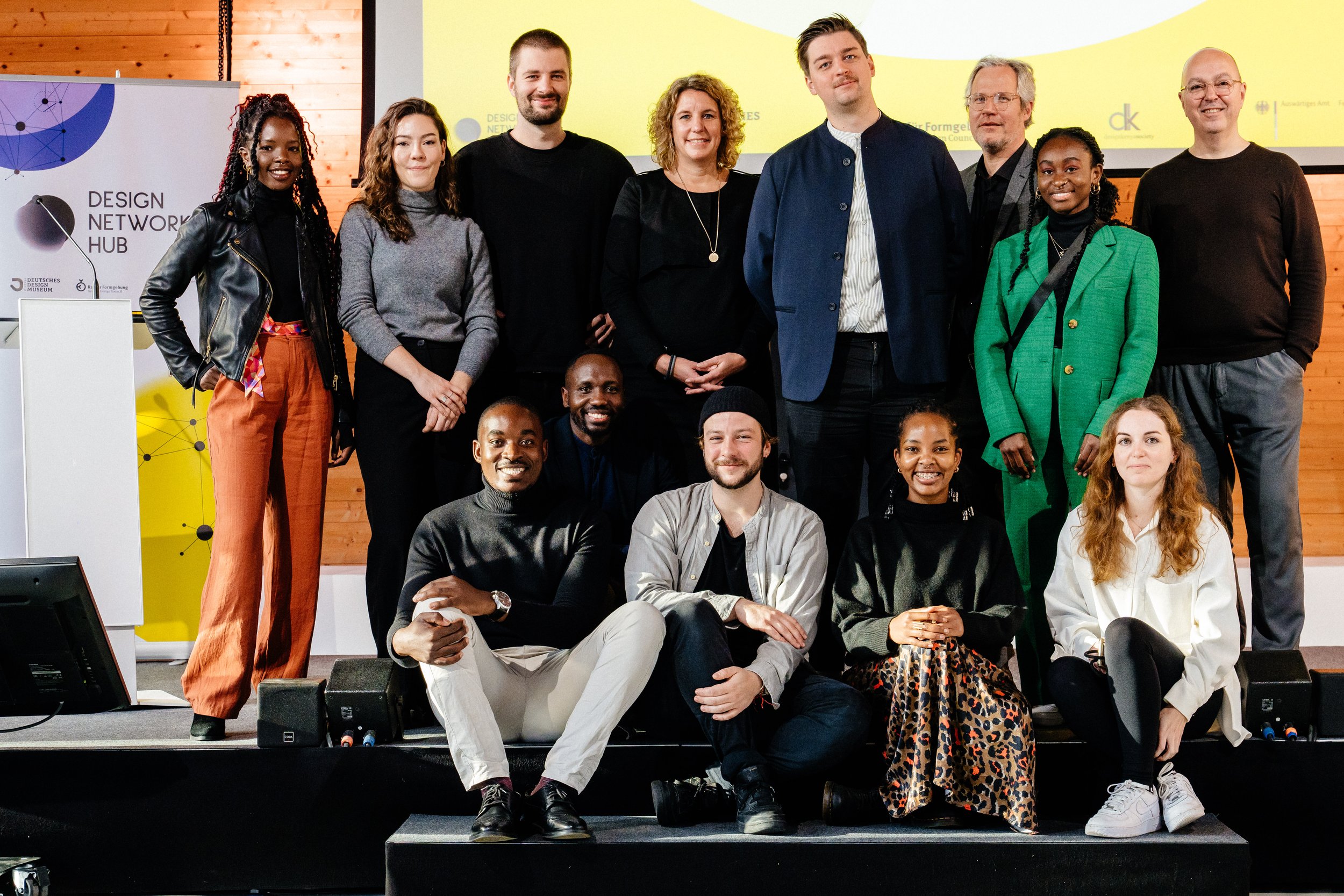
Zinia - Design Networking Hub
Zinia is a modular sensor kit that helps small holder mushroom farmers monitor & control the conditions in their grow house and therefore optimize their harvest. This project was a collaboration between myself Madita, and Philip as part of the pilot cohort of the Design Networking Hub.

Ideas Crossing Borders 2022 —
Presentation of Zinia during the Ideas Crossing Borders Conference in Berlin, November 2022.

Overview —
The Design Networking Hub is a contemporary knowledge and networking platform developed by the German Design Museum Foundation to support German-Kenyan cooperation projects in the field of design. For their first year they partnered with the Design Kenya Society and selected a pilot group of 5 designers from each country.

Collaboration —
Along with Madita and Philip, German designers in the cohort, we decided to explore the topic of technology and work to solve a challenge or maximise on an opportunity we identified. Over the course of 18 months we networked with and learnt from leading designers, cooperation partners, and individuals involved in agriculture in both countries.

Focus Area —
From the onset of our first in-person meeting, our group knew we wanted to explore the use of technology as an enabler in a sector of economic importance to both Germany and Kenya. And we ere keen to see how we could use it to bring together communities and bring radical transformation.

Workflow —
In order to collaborate across design disciplines, and time zones creating a flexible yet structured project management process was essential. This was a great opportunity for us to flex our project management skills as we designed a workflow that was as seamless as possible.

Research —
We spoke to farmers in both Kenya and Germany to understand as much as possible including the crops they grow, the challenges they face, their pressing needs, the farming technologies they use, and their decision making process when it comes to adopting new methods or tools. Our conversations brought to light the importance of creating and maintaining the optimal environment for food production particularly for small-holder farmers. We discovered that though there are great sensor based technology solutions that leverage machine intelligence to help farmers make smarter decisions, many small-scale farmers are locked out from accessing these machines because of the high cost of acquisition, and because many of them are tech novices.

Prototyping —
Through our conversations and knowledge share with a mushroom farmer in Germany we managed to identify key sensors that could be assembled in a starter kit that would be beneficial to small scale farmers. We met in-person in Frankfurt to work on our concept and to begin building a prototype for our sensor kit.

The prototype includes 3 sensors, a UV sensor for light conditions, as ensuring that there is very little light is essential to the growth of mushrooms. A humidity & temperature sensor to ensure high humidity & maintain temperatures between 15-25 degrees Celsius which is the optimal range for most mushroom varieties. And finally a Carbon Dioxide sensor, as low levels of CO2 are paramount to the growth mushrooms.

The 3 sensors in the kit are each enclosed in frames that can be attached or stacked on to the base which contains the motherboard. The information from the sensors is transmitted to a central database, providing users with a historical record of the conditions in their grow house. This helps our users keep an active record of their conditions to better control the environment for optimal harvest.

Testing —
We were fortunate enough to test our prototype out at Jomo Kenyatta University of Agriculture & Technology (JKUAT) just outside of Nairobi. Where they run an introductory course to help inform and educate farmers new to mushroom growing on the process involved. we did a comparison of Zinia and the current non digital measurement tools. We tested out the two systems in the demo grow house they have which is made of natural materials like wood, grass, hay and mud.

Learnings —
Key takeaways from the testing included concerns on size and placement. As most grow houses have wooden or metal rod shelving that makes it difficult to place objects on. We also noted that in order to get an accurate depiction of the grow house the sensor kit would have to be placed at varying heights and positions in the room. Concerns about fragility & complexity of the modular build came up as potential barriers of use for some users.

Lastly one thing we hadn’t accounted for that Patrick, who runs the program, aptly pointed out is the informative and educational material that helps farmers interpret what the results mean for the variety of mushrooms they are growing. Patrick himself has a chart that he uses once he has the readings to interpret the results.

Refine —
The learnings from our testing took us back to the drawing board and we worked to address the concerns raised, the discoveries made, and to design additional resources that would help our users make the best use of the kit.

Zinia 2.0 —
Our updated product features a more slim and sleek rectangular design making it easier to place on a shelf with rails and with a strap on the top to hang up when needed. We also designed a 3D print version and an off the shelf version. This is to make the kit more accessible to users as a 3D print offers a cheaper and decentralised production line for the kit.

Communication Design —
The kit also includes a leaflet with information on mushroom cultivation giving beginners an overview of the conditions necessary to successfully grow different types of mushrooms.

App & Text Messages —
Lastly we designed two methods of delivery for the readings from the sensor via the app and text message to cater to users with different types of mobile devices. When setting up their kit users input the type of mushrooms they are cultivating which helps the system provide an assessment of whether they’re readings are too high, optimal, or too low. Within the app we explored several visualisation methods for this as we were keen to create a glanceable interaction that would instantly give users a clear picture of where they stand.

Ideas Crossing Borders 2022 —
We were honored to present our project during the Ideas Crossing Borders Conference in Berlin in November 2022, and received valuable feedback and interest from the designers, and cooperation partners.

